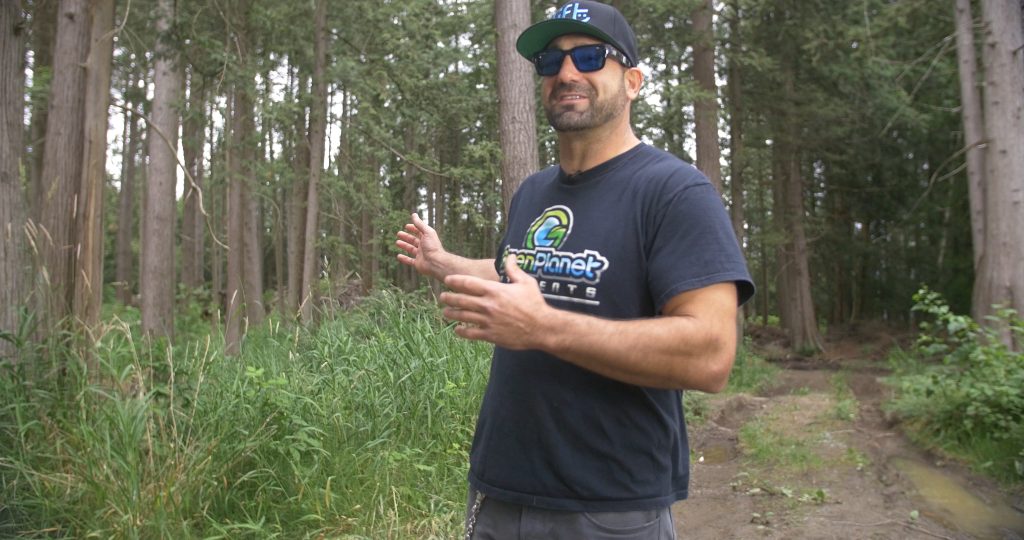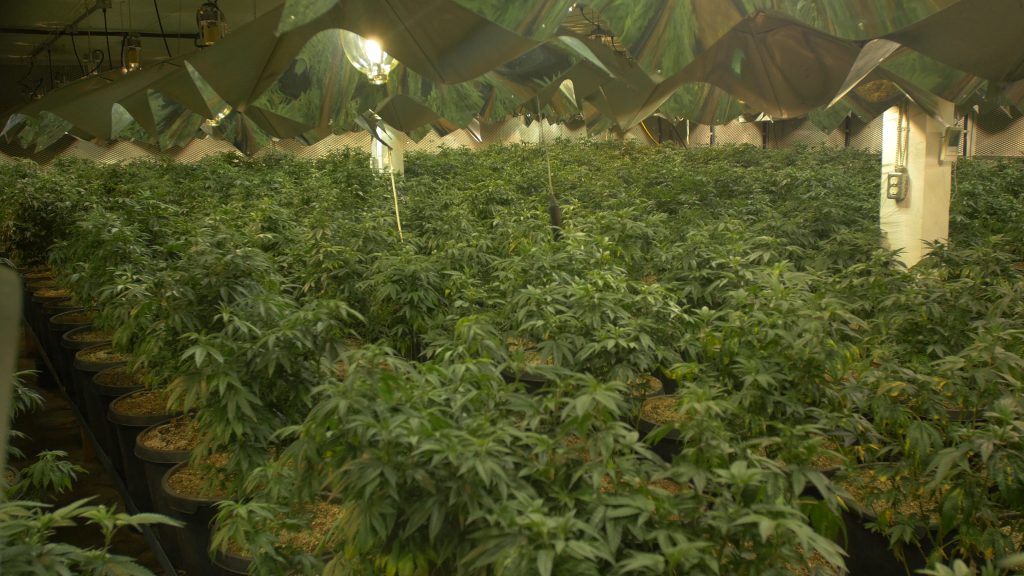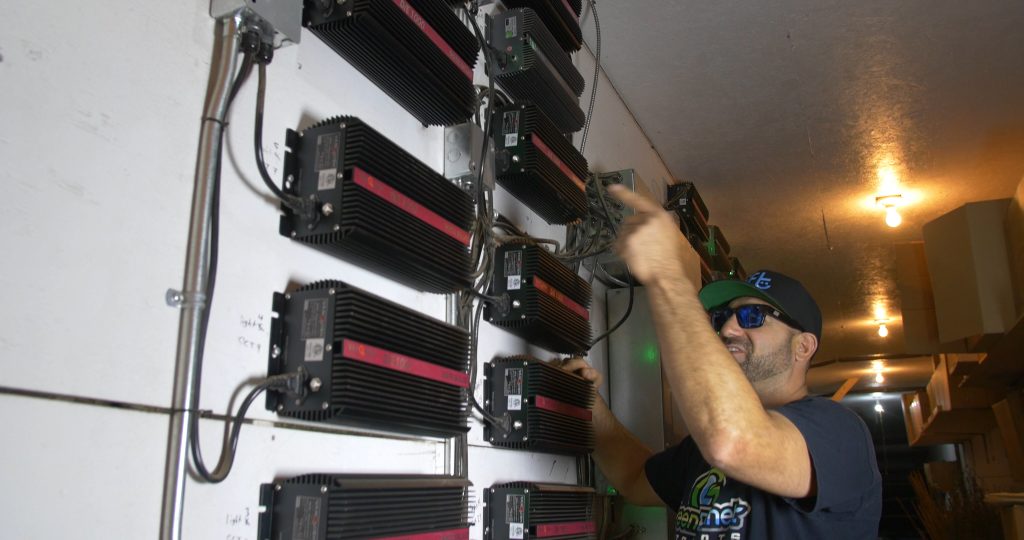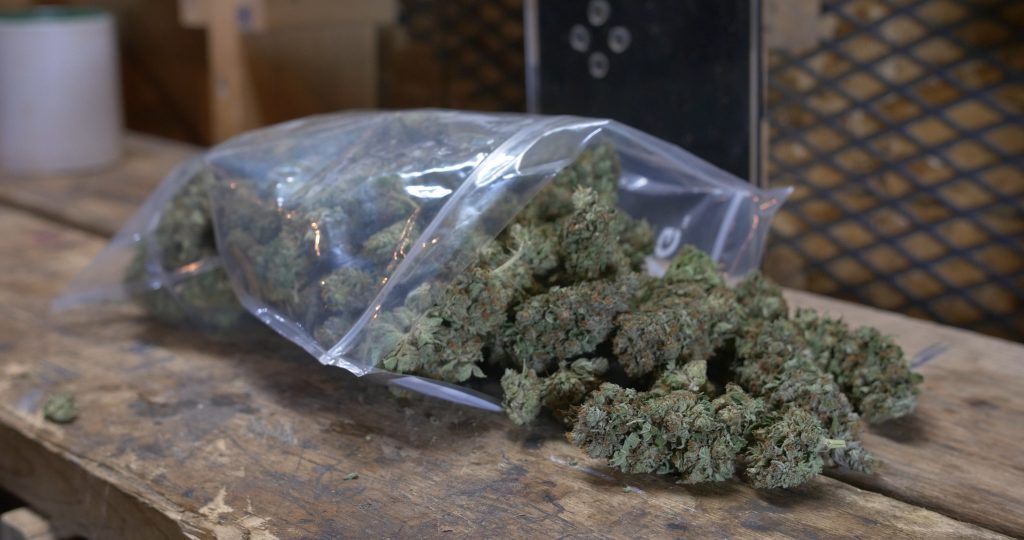Share
Share
GROWING EXPOSED EPISODE 6: Back Country 300:
Growing Exposed is a new video series produced by Jeremy Deichen. Coined “the MTV Cribs of the marijuana industry” the show is led by host Amanda Mackay. Growing Exposed has found a unique way to open up the once underground world, revealing the secrets of industry leaders. In addition to garden tours, David Robinson, author of The Grower’s Handbook lends his expertise in a segment entitled Teachings of The Garden Sage. David has dedicated his life to dispelling the myths behind cannabis while educating people on how plants grow.
Season 1 Episode 6
What do you get when you have a grower that wants to set up a very high-end, custom-built grow operation nestled in an old growth forest in a remote area of British Columbia? With the help of our garden tour-guide Justin, a 20-year veteran in the hydroponics industry, we’ll find out.
Red doors mean fortune in Chinese culture, and behind red doors of solid steel is a vast fortune of green gold called Super Kush. But to grow the best of the best, this garden has to be full-throttle. With just under 1 million BTUs of air conditioning, 300 HID lights, and 600 amps of 3-phase power, this grower has designed a facility that produces some of the most potent and high-quality cannabis in the world today. There is no messing around when it comes to security, which is essential when running an operation this huge. Heavy duty steel doors, armor-coated from top to bottom, lead into four separate rooms with eight HID lights each, totalling three-hundred lights in the entire facility.

According to professional growers, such as the Garden Sage David Robinson, it’s worth it to garden organically: “Today, more than ever, it’s worth it to garden organically and provide the healthiest plant material we possibly can.”
The intense heat produced by three-hundred HID lights is cooled by a long row of 5-tonne air conditioners that produce an astounding total of just under 1 million BTUs. The grower has a simple set-up, which often works the best. One veg room contains eighty Metal Halide bulbs with reflectors, able to be raised and lowered by a sophisticated rope-and-lever system at one side of the room. Everything is completely automated and irrigation systems are accessible. On trophs are 15 gallon pots set up with three drip meters feeding at 2 gallons per hour. With all the electrical components, plus the transpiration from the plants themselves, this room alone produces a ridiculous amount of heat cooled by five 5-tonne air conditioners. It may seem overly extravagant to the novice grower, but the experienced grower knows just how necessary climate control is when it comes to growing great-quality cannabis

Most growers, however, don’t have access to grow rooms quite like this. If you’re doing some indoor gardening, chances are you’re using a grow tent in your own home. According to the Garden Sage David Robinson, a simple one light grow tent set-up is a great starting foundation for any home grower: “Usually, all you need is an exhaust fan and a thermostat, a heater to maintain the lights-off temperature, and a supply of CO2 to fully complete the cycle of photosynthesis.”

Moving into the reservoir room, this grower is serious when it comes to nutrition. Using GP3 from Green Planet Nutrients, a high-quality, clean three-part fertilizer, he ensures his plants have fantastic nutrition mixed into four 1000 litre reservoirs that feed four separate rooms. The pH and temperatures are on point and the nutrient solution is nicely aerated to ensure a healthy amount of oxygen gets to the plants’ root systems.
But what about the electrical? This grower has that well under control and is a prime example of how to do things right. He got on top of his grow-game before any problems surfaced and hired the right man for the job ; a certified electrician who ensured all electrical components are well organized, properly designed and set up to code. This makes the grower’s job much easier and safer by minimizing hazards such as potential fires caused by poor wiring and the overheating of ballasts.
here is nothing more devastating or embarrassing than having your entire grow-operation go up in flames because you failed to invest in safety first. This facility’s on top of it all when it comes to quality, too: their electrical is controlled by a number of Powerbox and Vanquish ballasts–all cool to the touch, thanks to an air conditioner solely devoted to keeping the power room cool.
The veg room is full of 4-week-old cannabis plants from wall-to-wall, with tons of airflow. The grower also keeps the lower third of the plants trimmed clean, which is a great technique to eliminate hiding places for pests and boosts the energy devoted to developing large flowers. As light doesn’t penetrate the bottom third of the plants, there is no sense of having extra leaves. All the plants have lots of tops, which is a great foundation for bud structure and allows the development of more flowers in the flower stage. The 15 gallon pots have a 50/50 mix of of perlite and promix, which provides lots of air to the rooting system, necessary for healthy roots.

This particular grower strongly believes air movement is key. Why? It provides a number of benefits: prevents bugs, pests, mould and mildew, and allows the plant to transpire and absorb the maximum amount of CO2–but, that’s not the only reason to keep the fans blowing in your grow space. Air movement mimics the gentle breeze plants encounter growing naturally outdoors, which creates a rhythmic movement that allows them to become stronger by creating tiny cracks in the stems that repair themselves. This process is much like how our own muscles tear and repair themselves through healthy exercise to gain strength and endurance. By strengthening your plants with a healthy amount of air movement, or “exercise”, they become more able to hold the larger flowers they will naturally produce as they’re strengthened by airflow.
“By supplying your garden with an adequate level of air movement–which can be one fan per light, or one fan every two lights; they could be oscillating or they could be floor fans.” Says David Robinson. “The important thing is that all the plants are dancing. Don’t hammer them with air, we’re not looking for windburn, we’re looking for all the plants happy and dancing in the garden, where we’re all going to benefit from this essential requirement.”
Going over to the flowering room, just to put into perspective the amount of product produced, Justin takes a look at a well-used T2 Twister trimmer, which is responsible for trimming an enormous amount of product. This hash-coated twister is worn and has practically paid for itself in use. Even though it’s only supported by flat tires, it’s still going strong. This trimmer is a prime example that investing in quality is worth the extra cost.
The flower room is a vast, even canopy of tops with huge, dense, aromatic buds. According to our tour guide, “it stinks so beautifully you’ll wish you had smellovision.”
Eighty HPS bulbs create a mass amount of light penetration and a wide red spectrum which is crucial for flower development. Like in the first room, all lights are controlled by one rope per light, enabling the grower to raise and lower light fixtures without having to move through the plants and get covered in resin. A simple, yet genius solution to a problem many growers struggle with.


During the last week of flower, this grower uses an uncommon technique to bring out gorgeous colours in his final product. During the last week of flower, he takes the temperature down to 55-60°F, which normally slows down most plant processes. However, this also accentuates the purples within the bud itself and brings out the autumn-like colours. The resulting Super Kush is extremely dense and resinous with insane trichome production, beautiful colouration, and amazing aromas.
“A lot of plants don’t really give off a lot of flavour until you squeeze them and allow the terpenes to come to your nose.” Says Justin as he brings a huge flower to his nose. “These are sweet, very fragrant, fantastic smelling. I wish I had a scope so I could scope out the trichomes to let you know if they’ve gone amber or milky. But the bud structure itself, over 50% of the hairs have gone orange, and that’s a good indicator that this bud is ready to harvest. Completely snow covered, and once they remove all the fan leaves and do the trim, this is going to be a fantastic-looking harvest.”
In this episode of Growing Exposed, we looked at a rural British Columbia growing facility that takes quality very, very seriously. With serious security measures and immaculate environmental control, an insane number of electrical components, the best nutrients available, amazing air flow, and controllable light fixtures, the end product is nothing but excellent. This grow shows how important environmental control is for growing high quality, potent cannabis, and why airflow is so crucial for the development of large, well-developed blooms. For more Growing Exposed, and for behind-the-scenes, tune in at GrowingExposed.com and make sure to follow Growing Exposed on Facebook and Instagram.


